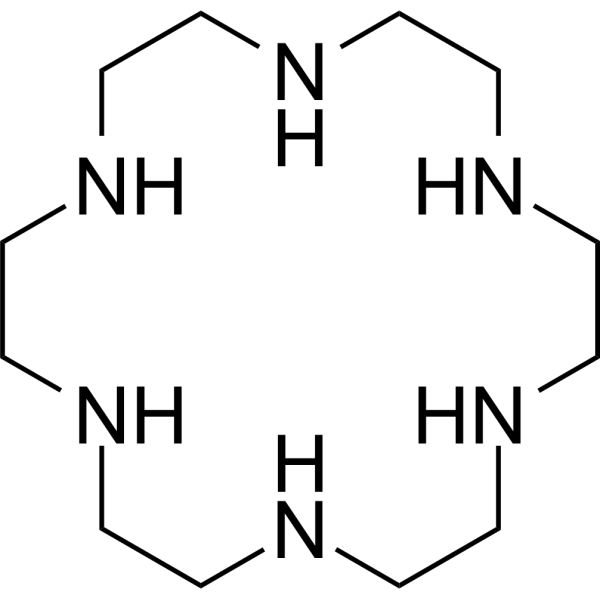- Anti-infection
- Antibody-drug Conjugate/ADC Related
- Apoptosis
- Autophagy
- Cell Cycle/DNA Damage
- Cytoskeleton
- Epigenetics
- GPCR/G Protein
- Immunology/Inflammation
- JAK/STAT Signaling
- MAPK/ERK Pathway
- Membrane Transporter/Ion Channel
- Metabolic Enzyme/Protease
- Neuronal Signaling
- NF-κB
- PI3K/Akt/mTOR
- PROTAC
- Protein Tyrosine Kinase/RTK
- Stem Cell/Wnt
- TGF-beta/Smad
- Vitamin D Related/Nuclear Receptor
- Others
Anti-infection
Apoptosis
Cell Cycle/DNA Damage
Epigenetics
GPCR/G Protein
- 5-HT Receptor
- Adenylate Cyclase
- Adhesion G Protein-coupled Receptors (AGPCRs)
- Adrenergic Receptor
- Amylin Receptor
- Angiotensin Receptor
- Apelin Receptor (APJ)
- Arf Family GTPase
- Arrestin
- Bombesin Receptor
- Bradykinin Receptor
- Cannabinoid Receptor
- CaSR
- CCR
- CGRP Receptor
- Chemerin Receptor
- Cholecystokinin Receptor
- CRFR
- CXCR
- EBI2/GPR183
Immunology/Inflammation
Membrane Transporter/Ion Channel
Metabolic Enzyme/Protease
- 11β-HSD
- 15-PGDH
- 17β-HSD
- 5 alpha Reductase
- Acetolactate Synthase (ALS)
- Acetyl-CoA Carboxylase
- Acetyl-CoA synthetase
- Acyltransferase
- ADAMTS
- Adiponectin Receptor
- Aldehyde Dehydrogenase (ALDH)
- Aldose Reductase
- Amine N-methyltransferase
- Aminoacyl-tRNA Synthetase
- Aminopeptidase
- Aminotransferases (Transaminases)
- Amylases
- Angiotensin-converting Enzyme (ACE)
- ANGPTL
- Apolipoprotein
Neuronal Signaling
Protein Tyrosine Kinase/RTK
Stem Cell/Wnt
- Compound Screening Libraries
- Bioactive Screening Libraries
- •Bioactive Compound Library
- Drug Repurposing Series
- •FDA-Approved Drug Library
- •Drug Repurposing Compound Library
- Natural Products Series
- •Natural Product Library
- •Natural Product-like Compound Library
- Metabolism Series
- •Human Endogenous Metabolite Compound Library
- Disease Related Compound Libraries
- Signaling Pathway Series
- Fragment Libraries
- Diversity Compound Libraries
- •50K Diversity Library
- •5K Scaffold Library
- •3D Diverse Fragment Library
- Virtual Screening
- •50K Virtual Diversity Library
- •10M Virtual Diversity Library
- Recombinant Proteins
- Cytokines and Growth Factors
- Immune Checkpoint Proteins
- CAR-T Related Proteins
- CD Antigens
- Fc Receptors
- Receptor Proteins
- Enzymes & Regulators
- Complement System
- Ubiquitin Related Proteins
- Viral Proteins
- Biotinylated Proteins
- Fluorescent-labeled Recombinant Proteins
- GMP-grade Proteins
- Animal-free Recombinant Proteins
- Protein Expression Service
- Custom Synthesis Service
- ADC-Related Custom Services
- PROTAC-Related Custom Services
- Cytokines and Growth Factors
- Immune Checkpoint Proteins
- CAR-T Related Proteins
- CD Antigens
- Fc Receptors
- Receptor Proteins
- Enzymes & Regulators
- Complement System
- Ubiquitin Related Proteins
- Viral Proteins
- Biotinylated Proteins
- Fluorescent-labeled Recombinant Proteins
- GMP-grade Proteins
- Animal-free Recombinant Proteins
- Others
- View More
CAR-T Related Proteins
- CD27 Ligand/CD70
- CD4
- CD19
- CD27 Ligand/CD70
- CD123
- CD138/Syndecan-1
- Epithelial Cell Adhesion Molecule (EpCAM)
- Folate Receptor 1
- GPC-3
- Guanylate Cyclase 2C
- ErbB2/HER2
- ErbB3/HER3
- c-Met/HGFR
- MSLN
- CA-125
- ROR1
- CEACAM-5
- CD314/NKG2D
- Prostate Specific Membrane Antigen
- CD319/SLAMF7
- TROP-2
- Siglec-6
- Folate Receptor alpha (FR-alpha)
- CD314/NKG2D
- Siglec-3/CD33
- CD27 Ligand/CD70
- CD319/SLAMF7
- ErbB2/HER2
- Siglec-3/CD33
- CD7
- MUC-1/CD227
CD Antigens
- T Cell CD Proteins
- B Cell CD Proteins
- NK Cell CD Proteins
- Macrophage CD Proteins
- Monocyte CD Proteins
- Stem Cell CD Proteins
- Platelet CD Proteins
- Erythrocyte CD Proteins
- Dendritic Cell CD Proteins
- Epithelial cell CD Proteins
- Endothelial cell CD Proteins
- Signal Transduction-related CD Proteins
- Cell Adhesion-related CD Proteins
Receptor Proteins
- Receptor Tyrosine Kinases
- Receptor Serine/Threonine Kinases
- Receptor Tyrosine Phosphatase
- Receptor Guanylyl Cyclase Family
- Cell Adhesion Molecules (CAMs)
- G-Protein-Coupled Receptors (GPCRs)
- Nuclear Receptor Superfamily
- Pattern Recognition Receptors
- Notch family
- Siglec
- Leukocyte Immunoglobin-like Receptors
- Killer-Cell Immunoglobulin-like Receptors
- Cytokine Receptors
Enzymes & Regulators
- Oxidoreductases (EC 1)
- Transferases (EC 2)
- Hydrolases (EC 3)
- Lyases (EC 4)
- Isomerases (EC 5)
- Ligases (EC 6)
- Translocases (EC 7)
- Matrix Metalloproteinases
- ADAMs/ADAMTSs
- Cathepsin
- Carboxypeptidase
- Angiotensin-converting Enzymes
- Caspase
- Carbonic Anhydrase
- Serine/Threonine Kinase Proteins
- Protein Tyrosine Kinases
- Phosphatase
- Topoisomerase
- Protease Inhibitors
- Protein Kinase Inhibitor Peptide (PKI)
- Cyclin-Dependent Kinase Inhibitor Proteins
- Cystatin Family
- Molecular Biology
- •Nucleic Acid Gel Electrophoresis
- •Vector Construction
- •Restriction Endonuclease
- •Materials
- •PCR & qPCR
- •RT-PCR
- •Sequencing
- Protein Biology
- •Protein Sample Preparation
- •Protein Purification
- •Protein Electrophoresis & WB
- •Labeling Kit
- •Multiple Fluorescent Staining
- •Immunoassay
- Cell Biology
- •Cell Culture
- •Cell Analysis
- •3D Cell Culture
- •Cell Isolation
- View More
- Custom Synthesis Service
- Bulk and Custom Synthesis Service
- ADC-Related Custom Services
- PROTAC-Related Custom Services
- Custom Reference Standard Products
- Custom Peptide Synthesis
- Protein Expression Service
- Recombinant Antibody Expression Service
- Protein Crystal Structure Elucidation
- Oligonucleotide Synthesis
- Fluorescent labeling Service
- Custom Synthesis of Stable Isotope-Labeled Compounds
- One-stop CDMO Service
- One-stop Compound Screening Platform
- Virtual Screening
- Molecular dynamics simulation
- Cell-based Compound Screening
- Ion Channel Screening
- Kinase Screening Service
- Surface Plasmon Resonance (SPR) Assay Service
- GPCR Bioassay Screening Services
- Nuclear Receptor Screening Services
- Affinity Mass Spectrometry
- DEL Synthesis and Screening
- Molecular Interaction Assay Service
- Drug Target Identification Service
- AI-Driven Drug Screening
- Molarity Calculator
- Dilution Calculator







































































































































































































































































































































































































































































































































































































































































































































































































































































































































































































































































































![3β-[N-(N′,N′-Dimethylaminoethyl)carbamoyl]cholesterol](http://file.medchemexpress.eu/product_pic/hy-149664.gif)






















































































































































































































































































![trans-[Ru(2TU)(PPh3)2(bipy)]PF6](http://file.medchemexpress.eu/product_pic/hy-163711.gif)

























































































































































![(E)-[6]-Dehydroparadol](http://file.medchemexpress.eu/product_pic/hy-77293.gif)





















































































































































































































































































































































































































































































































































































































































































































































































































































































































































































![(S)-Deoxy-thalidomide-2,7-diazaspiro[3.5]nonane-CH2-Me-PIP-Boc](http://file.medchemexpress.eu/product_pic/hy-168076.gif)












































































































































































































































































































































































































































































































































































































































































































































































































































































































































































































































































































































































































































































































































































































































































































































































































































































































































































































































































































































































































































































































































































































































































































![[Ag(2,2′-bipy)(dppe)][CF3SO3]](http://file.medchemexpress.eu/product_pic/hy-157974.gif)
















































![[D-Phe12,Leu14]-Bombesin](http://file.medchemexpress.eu/product_pic/hy-103287.gif)






















































































































































































































































































































































































































































































![[D-Arg1,D-Phe5,D-Trp7,9,Leu11]-Substance P](http://file.medchemexpress.eu/product_pic/hy-103544.gif)














































































































































































































































































































































































































































































































































































































































































































































































































































































































































































































































































































































































































































































































![N-[(3-Methoxyphenyl)methyl]adenosine](http://file.medchemexpress.eu/product_pic/hy-152304.gif)



















































![N-[[4-(Trifluoromethyl)phenyl]methyl]adenosine](http://file.medchemexpress.eu/product_pic/hy-152395.gif)



















































![Exatecan-amide-bicyclo[1.1.1]pentan-1-ylmethanol](http://file.medchemexpress.eu/product_pic/hy-160598.gif)
























































































































































































![[Ru(phen)2(xant)] hexafluorophosphate](http://file.medchemexpress.eu/product_pic/hy-161102.gif)


















































































































![5'-O-[Bis(4-methoxyphenyl)phenylmethyl]-adenosine](http://file.medchemexpress.eu/product_pic/hy-w097775.gif)











































































































































































































































































































































![β-Glucuronide-NB-bis[N(Me)-methyl ester]-MMAE](http://file.medchemexpress.eu/product_pic/hy-155313.gif)







































![5′-O-[(4-Cyanophenyl)methyl]-2′,3′-O-(1-methylethylidene)adenosine](http://file.medchemexpress.eu/product_pic/hy-w604427.gif)









































![[Nle20] H4 peptide (16−23)](http://file.medchemexpress.eu/product_pic/hy-p10570.gif)

















































![4-(Benzo[d]oxazol-2-yl)aniline](http://file.medchemexpress.eu/product_pic/hy-w029411.gif)







































































































![[Leu15]-Gastrin I (human)](http://file.medchemexpress.eu/product_pic/hy-p2671.gif)


















































































2](http://file.medchemexpress.eu/product_pic/hy-157053.gif)















































































































































































































































































































































































![2-Amino-6-chloro-9-[(2,3,5-tri-O-benzoyl-2-C-Methyl-beta-D-ribofuranosyl)]-9H-purine](http://file.medchemexpress.eu/product_pic/hy-w069715.gif)















































































































































![[D-Lys6]-LH-RH](http://file.medchemexpress.eu/product_pic/hy-p3668.gif)





































































































































































![[8]-Shogaol](http://file.medchemexpress.eu/product_pic/hy-n2435.gif)
































































































































































































































































































![[8]-Shogaol (Standard)](http://file.medchemexpress.eu/product_pic/hy-n2435r.gif)




































































































































































































































































![fac-[Re(CO)3(L6)(H2O)][NO3]](http://file.medchemexpress.eu/product_pic/hy-155718.gif)














































































































































![fac-[Re(CO)3(L3)(H2O)][NO3]](http://file.medchemexpress.eu/product_pic/hy-155719.gif)

























































































































































































































![[Lys3]-Bombesin](http://file.medchemexpress.eu/product_pic/hy-p5413.gif)





















































































































































































































































































































![[10-(Diethoxy-phosphoryl)-decyl]-phosphonic acid](http://file.medchemexpress.eu/product_pic/hy-140327.gif)
































































































































































































































![3-β-D-Ribofuranosyl-6-hydroxymethyl-furano[2,3-d]-pyrimidin-2-one](http://file.medchemexpress.eu/product_pic/hy-154029.gif)


























